Sushi, the artful blend of vinegared rice and fresh ingredients, isn’t just a meal in Tokyo; it’s a cultural icon. Furthermore, it’s a culinary symphony that’s been fine-tuned over centuries. From humble beginnings as a way to preserve fish, sushi has transformed into a global sensation, beloved for its delicate flavors, artistic presentation, and the skill required to create it.
In Tokyo, sushi isn’t just food; it’s an experience. Whether you’re sitting at the counter of a tiny sushi bar, watching the chef at work, or dining in a high-end restaurant with a view of the city skyline, every sushi meal is a chance to connect with Japan’s rich culinary heritage.
- Edo's Culinary Revolution: The Birth of Nigiri Sushi
- Nigiri: Sushi's Rising Star: From Humble Origins to Culinary Art
- Maki Rolls: A Creative Explosion: Sushi's Evolution into an Ensemble Cast
- Sashimi: A Taste of Pure Elegance: The Art of Raw Fish
- The Dynamic Duo: Soy Sauce & Wasabi: Enhancing the Sushi Experience
- Sushi's Global Conquest: From Tokyo to the World
- The Encore: Sushi's Timeless Allure: Why We Keep Coming Back for More
- Check this out
Edo’s Culinary Revolution: The Birth of Nigiri Sushi
Sushi’s story begins way back in 8th-century Japan, where it was first used as a way to keep fish fresh. Early sushi was nothing like the bite-sized pieces we know today. Instead, it involved fermenting fish with rice. This was a practical way to preserve food, but it also created a unique and delicious flavor.
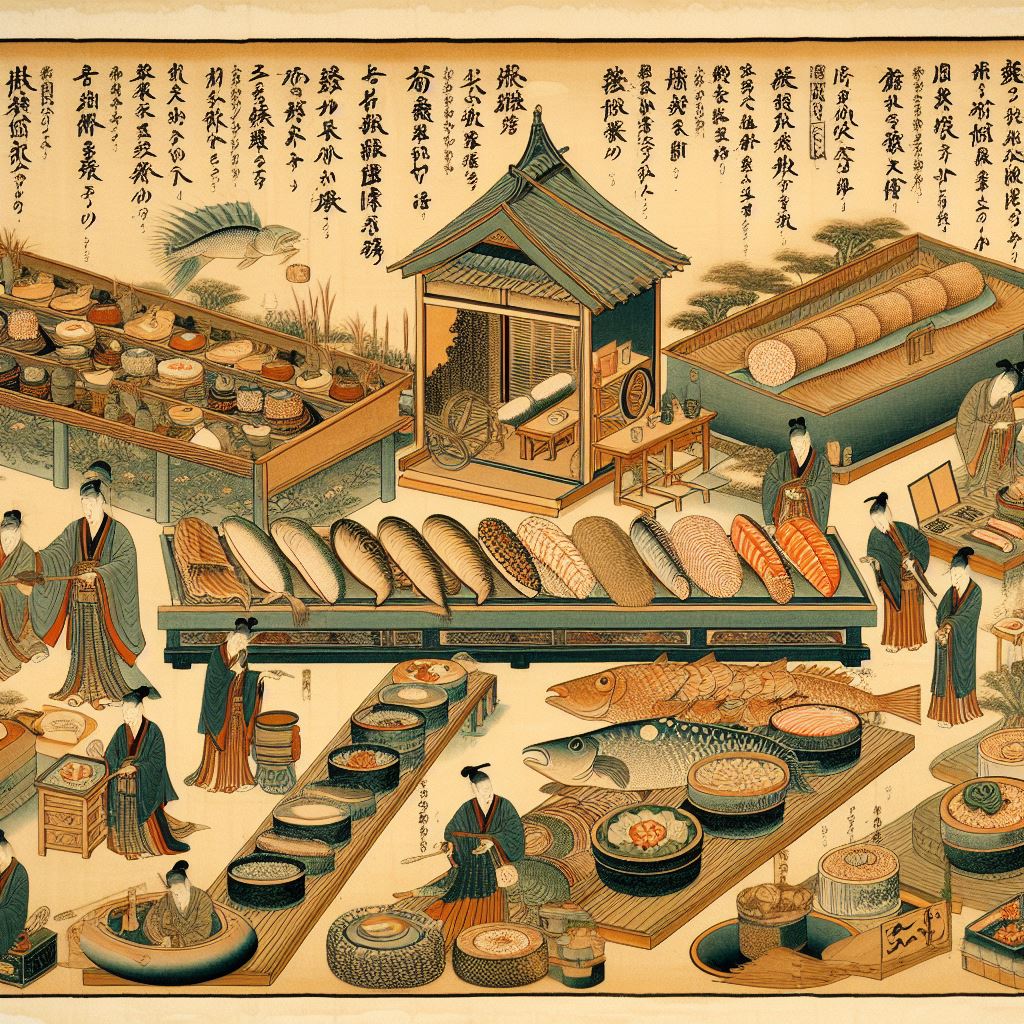
Over time, this preservation technique evolved into a diverse range of sushi styles, each one a unique note in the symphony of Japanese cuisine. The Edo period (1603-1868) saw the birth of nigiri sushi, where hand-pressed rice is topped with a single piece of fish. This marked a turning point in sushi’s history, transforming it from a preservation method into a culinary art form.
Nigiri: Sushi’s Rising Star: From Humble Origins to Culinary Art
Nigiri is the quintessential sushi experience. It’s a simple yet elegant dish: a small mound of rice topped with a slice of perfect fish. But don’t be fooled by its simplicity. Each nigiri is a masterpiece, a testament to the chef’s skill and understanding of flavor.
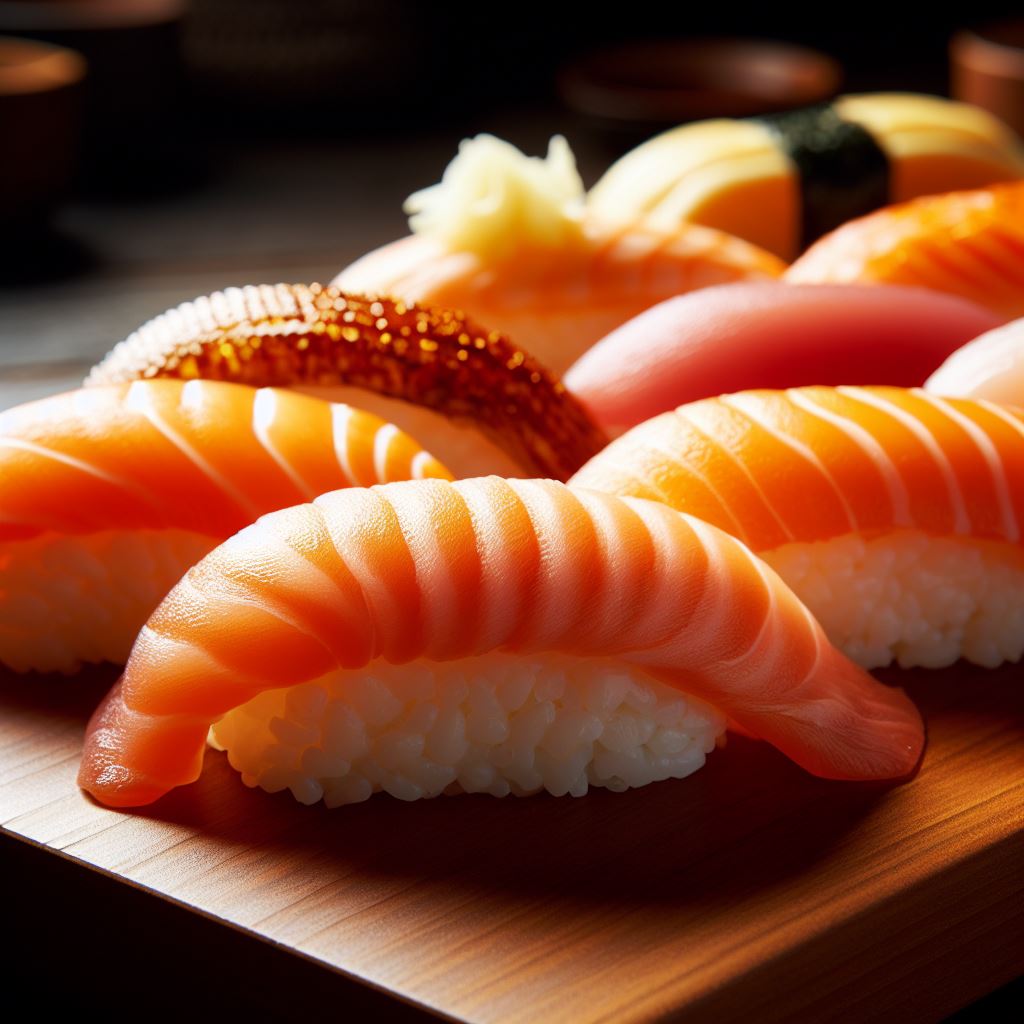
To begin with, the rice is the foundation of nigiri, seasoned with just the right amount of vinegar to create a balance of sweetness and acidity. The fish, whether it’s tuna, salmon, shrimp, or something more exotic, is chosen for its freshness and quality. And finally, the wasabi, a fiery green paste, adds a kick of heat that complements the delicate flavors of the fish and rice.
Maki Rolls: A Creative Explosion: Sushi’s Evolution into an Ensemble Cast
Maki rolls are where sushi gets creative. These rolls are made by wrapping rice, seaweed, and various ingredients in a bamboo mat. The possibilities are endless, from classic California rolls with avocado and crab to elaborate dragon rolls with eel and avocado.
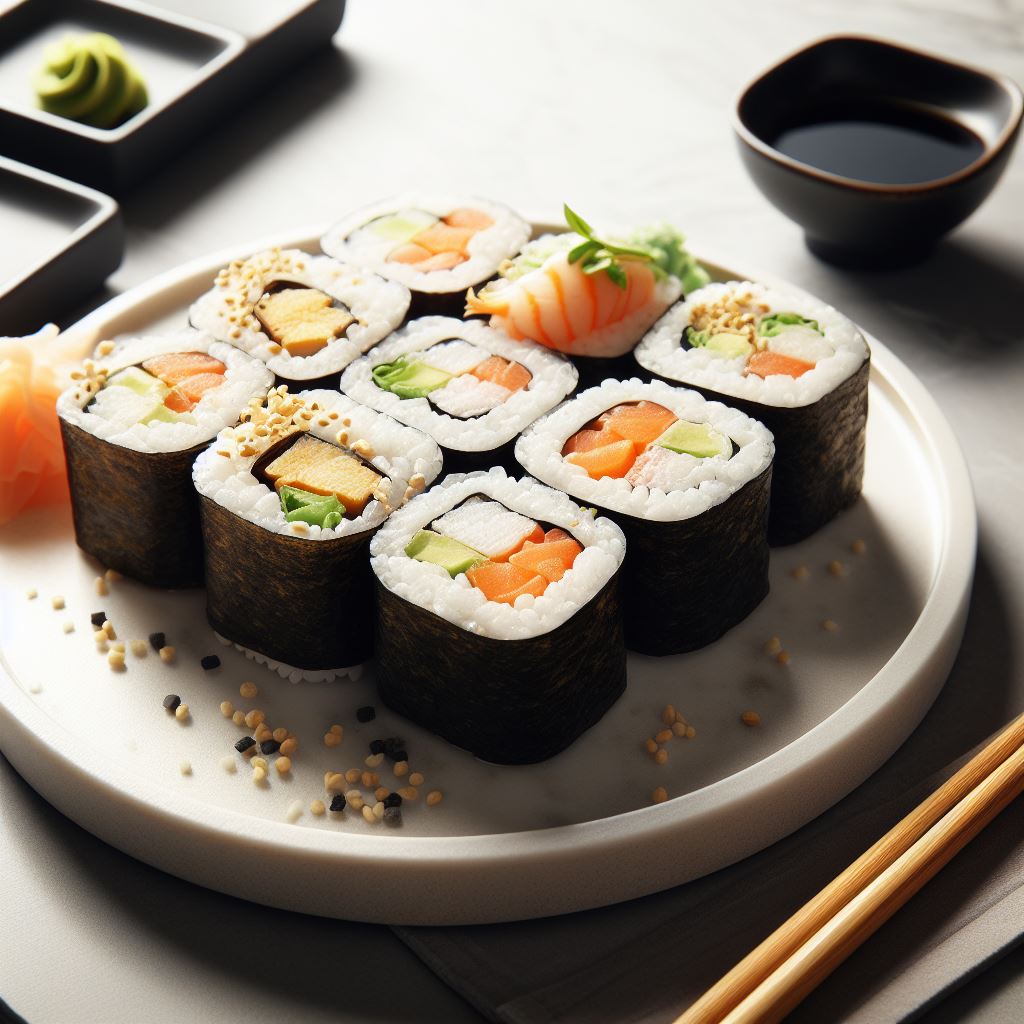
Essentially, maki rolls are a testament to the ingenuity and artistry of sushi chefs. They combine different textures and flavors to create a symphony of taste in every bite. Whether you prefer traditional maki or more adventurous creations, Tokyo’s sushi restaurants offer a wide variety of maki rolls to satisfy every palate.
Sashimi: A Taste of Pure Elegance: The Art of Raw Fish
Sashimi is sushi in its purest form: thin slices of fresh fish, simply presented. It’s a showcase of the chef’s skill with the knife and the quality of the fish. Each slice is carefully cut to highlight the fish’s natural beauty and flavor.
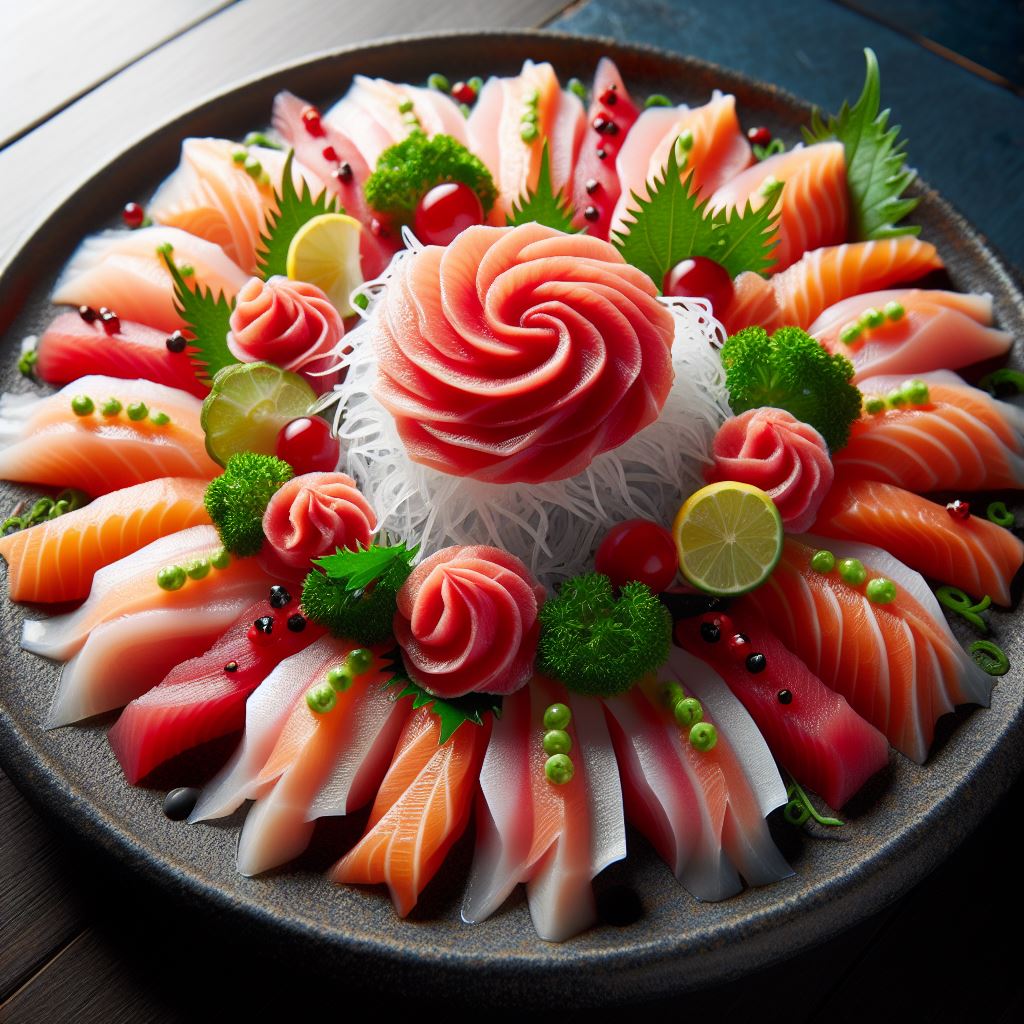
In essence, sashimi is a sensory experience. The cool, smooth texture of the fish melts in your mouth, releasing its delicate flavor. Whether you prefer the rich fattiness of tuna or the subtle sweetness of scallop, sashimi is a must-try for any seafood lover.
The Dynamic Duo: Soy Sauce & Wasabi: Enhancing the Sushi Experience
Soy sauce and wasabi are the perfect complements to sushi. While soy sauce adds a salty depth of flavor, wasabi brings a fiery kick. Finding the right balance between these two is key to enjoying the full flavor of sushi.
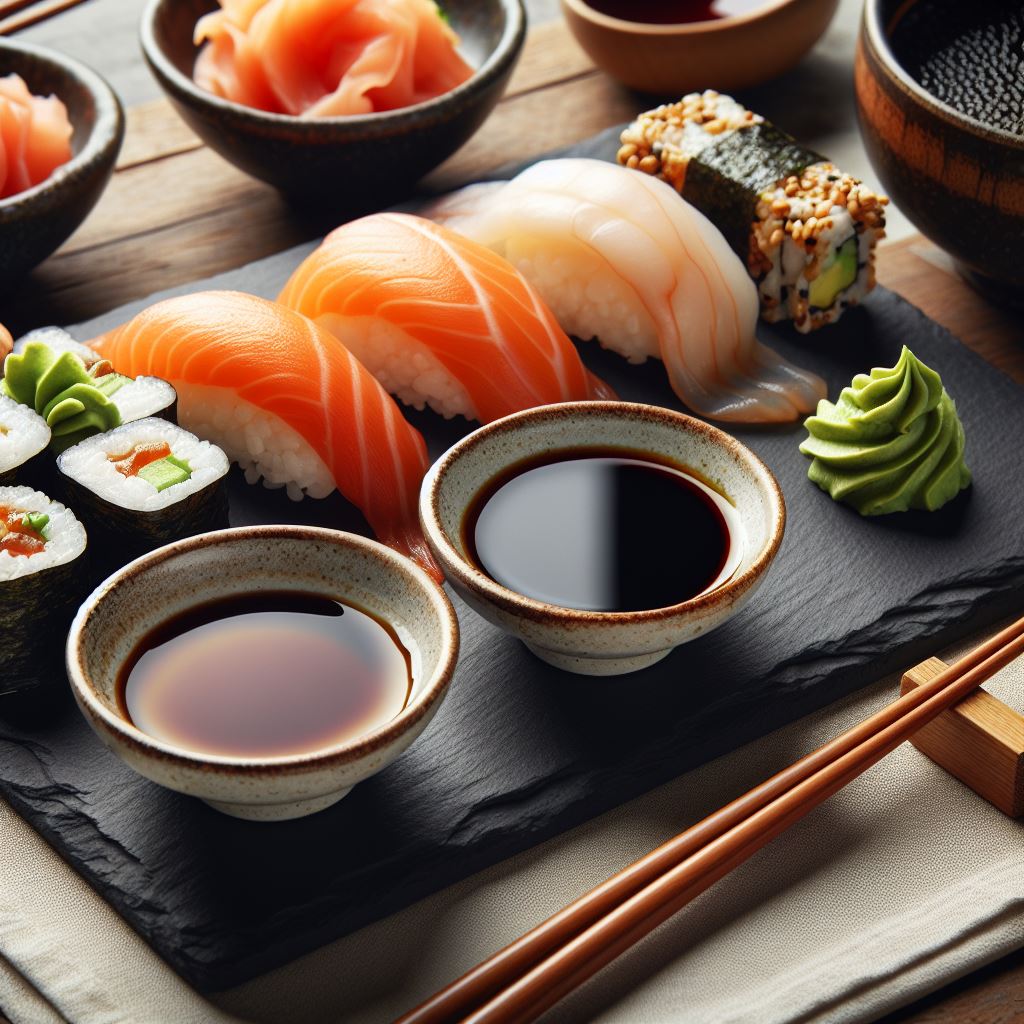
Many sushi chefs have their own secret soy sauce recipes, passed down through generations. Wasabi, on the other hand, is made from the grated root of the wasabi plant, known for its pungent aroma and sinus-clearing heat. Together, soy sauce and wasabi elevate the sushi experience, adding layers of complexity and depth to every bite.
Sushi’s Global Conquest: From Tokyo to the World
Sushi has become a global phenomenon, loved and appreciated around the world. You can find sushi restaurants in almost every major city, each offering its own unique take on this Japanese classic.
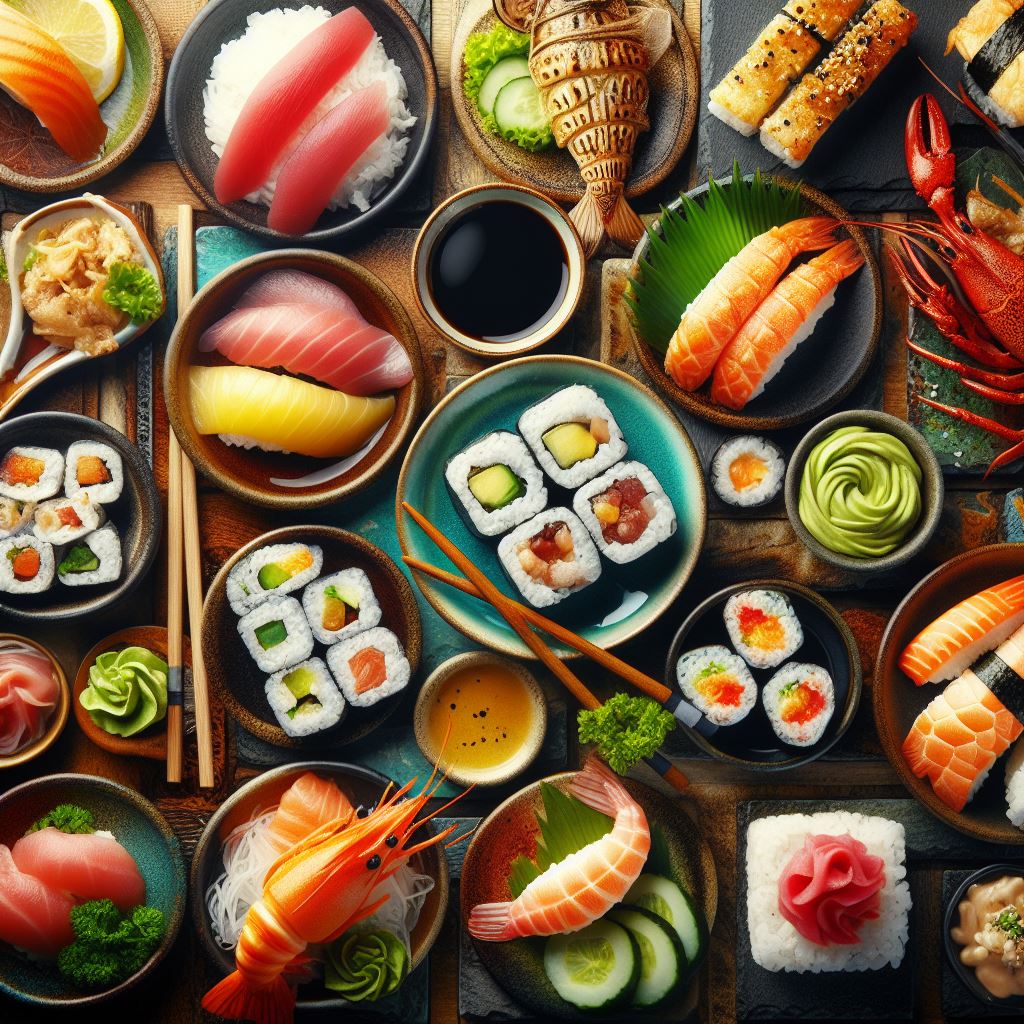
The global popularity of sushi has led to the creation of many new and innovative sushi dishes. For instance, sushi burritos, sushi bowls, and even sushi pizza are just a few examples of how sushi has evolved to suit different tastes and cultures.
The Encore: Sushi’s Timeless Allure:
Why We Keep Coming Back for More
Sushi isn’t just about eating; it’s about experiencing a culinary tradition that has stood the test of time. It’s a feast for the senses, a celebration of craftsmanship, and a testament to the enduring power of food to bring people together.
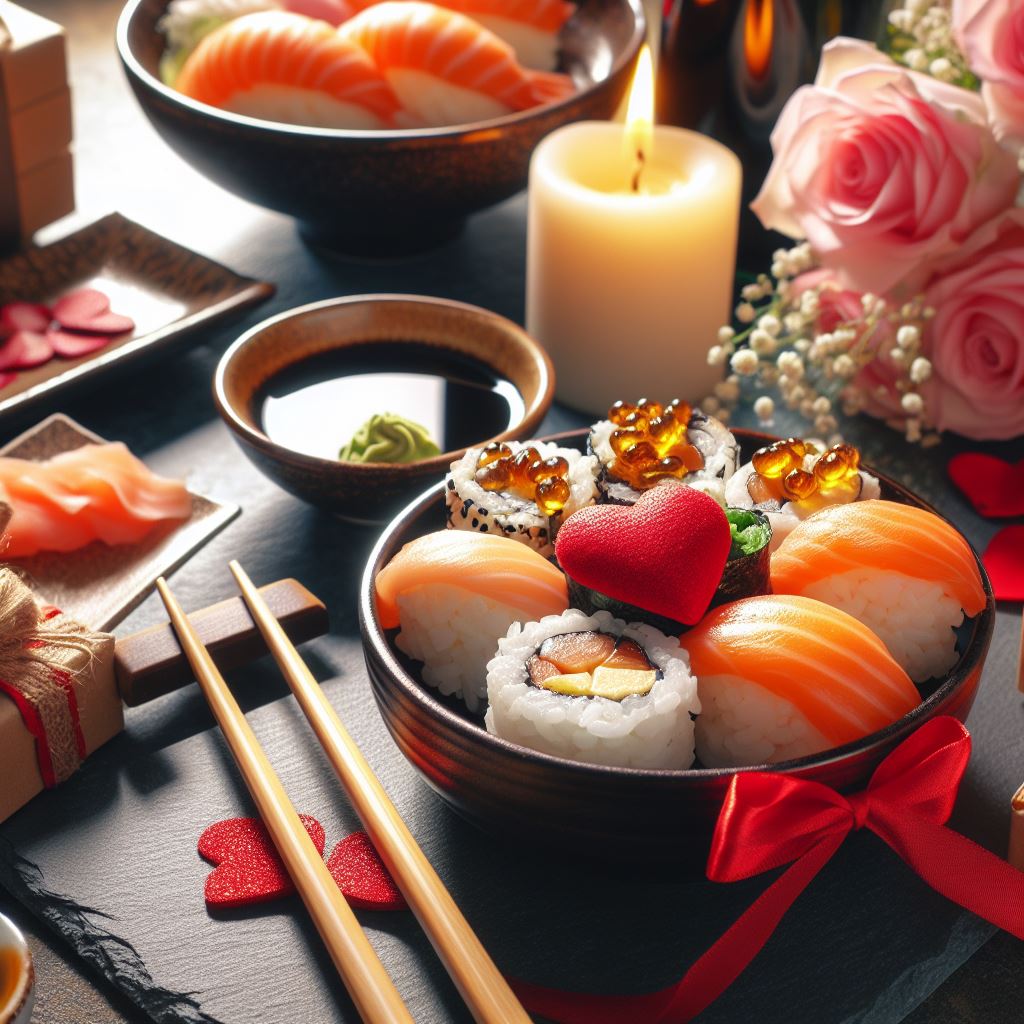
In Tokyo, sushi is more than just a meal. It’s a way to connect with Japanese culture and history. Whether you’re enjoying a simple nigiri or a creative maki roll, you’re experiencing a culinary tradition that has been passed down through generations. Ultimately, as sushi continues to evolve and adapt, it remains a symbol of the artistry, creativity, and passion that define Japanese cuisine.


